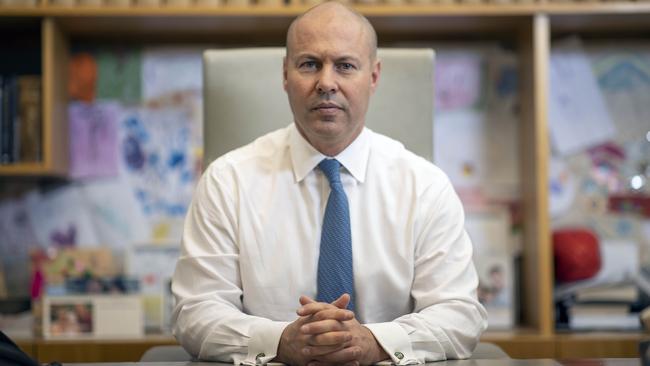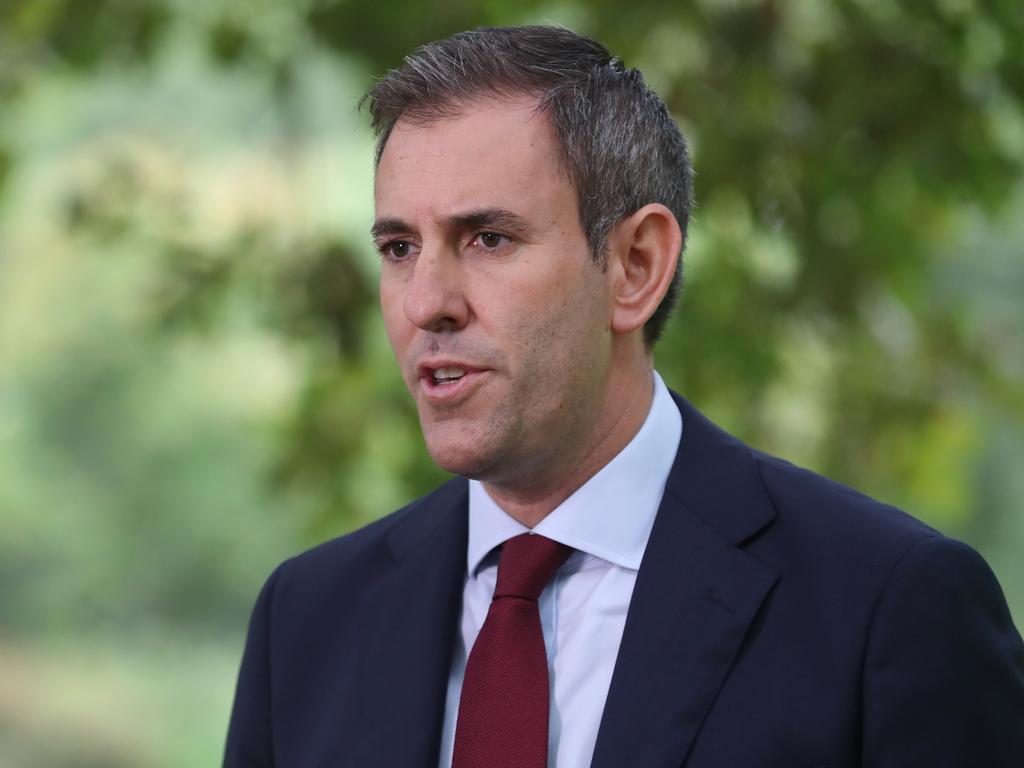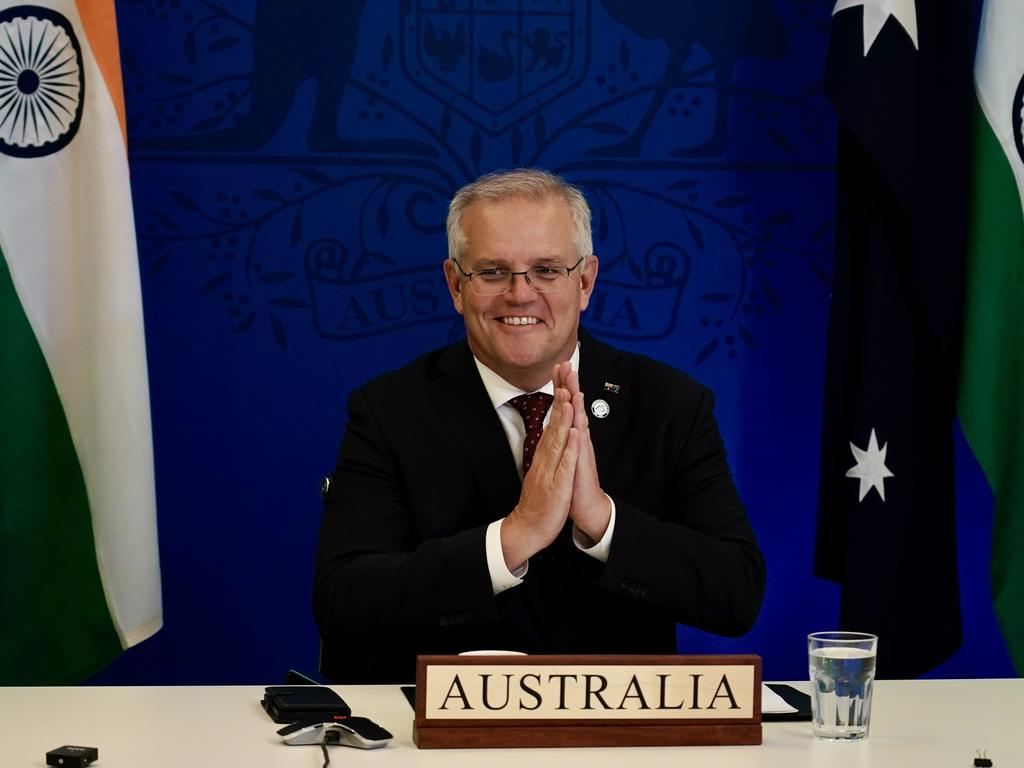Warning that quick fix for budget ‘too risky’
Aggressive budget repair would put our AAA rating at risk, warns the credit agency.

Aggressive budget repair would put Australia’s coveted AAA debt rating at risk and come with “long-term consequences for the economy”, leading credit agency Standard & Poor’s has warned.
The nation’s business leaders also said on Monday that the Morrison government should not be pursuing an “austerity” agenda, and should be focused on growing the economy.
A week out from a federal budget that will reveal a vastly improved bottom line while still highlighting Covid-19’s legacy of more than $1 trillion in borrowing, S&P Global Ratings lead country analyst Anthony Walker said structural changes to the economy meant running small deficits and running reasonable levels of debt was consistent with a top credit rating.
Josh Frydenberg has moved the government to the second phase of its fiscal strategy, focused on “stabilising and then reducing debt as a share of the economy”. Two months ahead of the May election, the Treasurer says this will be achieved through driving growth rather than via a program of sharp spending cuts.
Mr Walker said a shift to austerity would be counter-productive. “If the government were to correct the budget deficit too hard, too early it would have a detrimental impact on the economy,” Mr Walker said.
A premature return to eradicating debt and deficits would make it “much harder over the longer term to manage the budget and have long-term consequences for the economy.”
Mr Walker said there had been “a fundamental shift in the Australian rating”.
“In 2015, a balanced budget was most definitely needed for AAA. We had a very weak external position for many decades. However, prior to Covid, there was a structural improvement in the current account,” he said.
“Australia now runs healthy current account surpluses aided by the trade balance and commodity prices. From a ratings perspective, this has eased pressure on the government to balance its budget from a AAA rating perspective.”
Mr Walker said commonwealth deficits in the order of 2.5 per cent of GDP would still be consistent with the AAA credit rating, assuming states ran a combined deficit in the order of 0.5 per cent of output.
Mr Walker said Australia’s big-spending fiscal strategy adopted through the pandemic “was fundamentally behind maintaining the AAA rating”.
“Without that fiscal support we would have seen a much larger and more prolonged recession, and that would have meant the budget was left in a much worse structural position,” he said. The largest peacetime fiscal stimulus has left Australia among the best performing economies in the world through the health crisis. It has also left the country owning more than $1 trillion in debt and facing the potential for deficits into the next decade.
CBA head of fixed income Martin Whetton in a new research note told clients that “the notion that we have to ‘pay back the debt’ is a misguided concept”.
Mr Whetton said the federal pandemic response had been funded by long-term bonds at low rates.
“The fixation on debt repayment is simply a red herring when the servicing cost of the debt remains near its historic lows,” he said.
But Centre for Independent Studies senior fellow Robert Carling said a higher national debt burden came at the expense of the country’s resilience. “At the very least, it raises the nation’s economic risk profile. It leaves Australia more vulnerable to future adverse shocks,” Mr Carling said.
“If there’s another economical or geopolitical crisis within the next couple of years, and the government goes in for another big fiscal binge or even increased defence spending, they will be building on a much more elevated level of debt and we’ll never see the decline the (governments) talk about.”
ACCI chief executive Andrew McKellar said the government strategy of stabilising and reducing debt was “perfectly reasonable”.
“Does that mean we have to get back into budget surpluses in a given time frame? That’s not clear at the moment. That debate has to be had, and publicly, and we have time to do that,” Mr McKellar said.
Business Council of Australia chief executive Jennifer Westacott said “to make sure we’re ready for the next challenge we must strengthen our budget position”.
But Ms Westacott also said “this isn’t about austerity or big new spending – we have to grow our way out of it”.
“The best way to restore the budget position and pay down debt is to put the budgetary guardrails back in place and make sure we have an economy capable of recovering quickly and growing strongly,” she said.
Australia historically ran a current account deficit in the order of 3-4 per cent of GDP, but immediately ahead of the pandemic it was under 1 per cent as the mining investment boom left a legacy of much greater ongoing export earnings.
Thanks to a massive spike in commodity prices, the current account is now in surplus, equivalent to around 3.5 per cent of the economy.
Mr Walker said this surplus would dwindle to about 0.5 per cent of GDP, but would not return to the large deficits of the past.
“We were so focused on fiscal outcomes because the external position was so bad,” he said.
Were a government to pursue an explicit balanced budget strategy, the task would be intimidating, and politicians would likely struggle to gain public support.
Former treasurer Joe Hockey’s austere budget of 2014 included $10bn in savings measures in 2016-17 – many of which were never passed amid a massive political blowback.
All other things equal, today’s deficit would require at least $40bn in savings every year for the next decade to balance the budget.







To join the conversation, please log in. Don't have an account? Register
Join the conversation, you are commenting as Logout